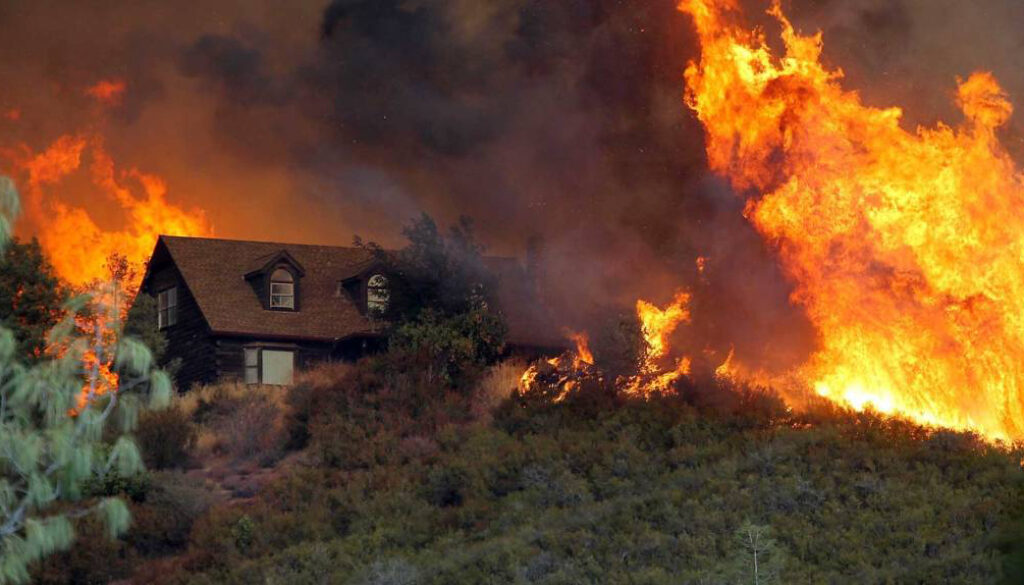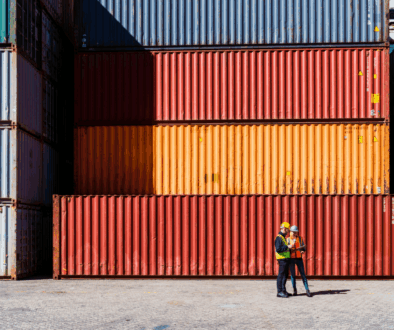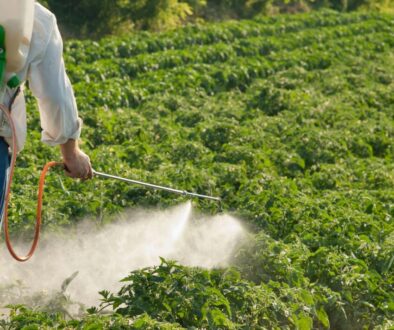Protecting homes in a world “increasingly on fire”
By Luyi Cheng
Homeowners and home builders in California and other US states at risk from wildfires must work harder to create “fire-resistant” homes as wildfire seasons grow in length, frequency, and severity, according to a new report.
Drier and hotter conditions associated with climate change, along with poor forestry management practices and other factors, are allowing for a denser, more fire-prone landscape even as residential and commercial development continues to encroach on wilderness spaces. It all exacerbates the risks and costs caused by raging wildfires, such as the cluster burning this week through Trinity County, California.
Preparing for and mitigating the costly consequences of wildfires requires an approach that centers home ignition as the main problem, and not the wildfire itself, stated a recent report by Headwaters Economics and the Insurance Institute for Business and Home Safety.
“Increasing home loss and growing risks require reevaluating the wildfire crisis as a home-ignition problem and not a wildland fire problem,” the report states. “A home’s building materials, design, and nearby landscaping influence its survival. Together with the location, arrangement, and placement of nearby homes, constructing a wildfire-resistant home is critical in light of increasing wildfire risks.”
“We’re not spending enough on the upfront mitigation and preparation,” Kimiko Barrett, a wildfire research and policy analyst at Headwaters Economics, said in a presentation to environmental journalists last week. Barrett said this work is aimed at helping communities thrive in “a world that is increasingly on fire.”
The US government spends about $65 million dollars suppressing each wildfire, an amount that has doubled since 1999, according to Barrett, who helped author the study.
The report, released last month, compared the cost of building a home under current state building standards to the cost of building one with additional wildfire-resistant features.
While current building codes in California include requirements such as flame-resistant vents and tempered windows, builders and buyers should do more – replacing traditional building materials with flame-resistant substitutes. These choices could add 4% to 13% to the current costs of building a new home.
But those costs should bring large returns, according to a 2019 report by the National Institute of Building Sciences. The report states that adopting up-to-date requirements would save $11 for every $1 invested. Going beyond those requirements can save even more – up to another $4 for every $1 invested.
Building new homes to resist fire is only addressing part of the problem, however, Erica Fischer, a professor of civil and construction engineering at Oregon State University, said during the briefing. People also need to upgrade existing homes to resist fire, though for many that may be too costly or otherwise unmanageable, she noted.
“We have a very large population that needs help and other resources. It goes beyond just passing the building codes,” she said. “How do we address all of these socially vulnerable communities and help them actually have hazard mitigation that will work?”
Headwaters Economics report recommends that federal and state governments provide subsidies to cover construction costs of building or retrofitting neighborhoods to make them more fire resilient.
Homeowners can also take action to protect their homes without involving extensive construction work. Even small measures, such as clearing gutters and surrounding areas of dried vegetation and removing propane tanks from decks during high-risk wildfire seasons can help, according to Barrett.
But the best move is not to build in fire-prone areas to begin with.
“Given the extreme conditions we’re facing, we need to think thoughtfully and deliberately about how, where, and under what conditions homes are being placed in these increasing risk areas,” said Barrett.




